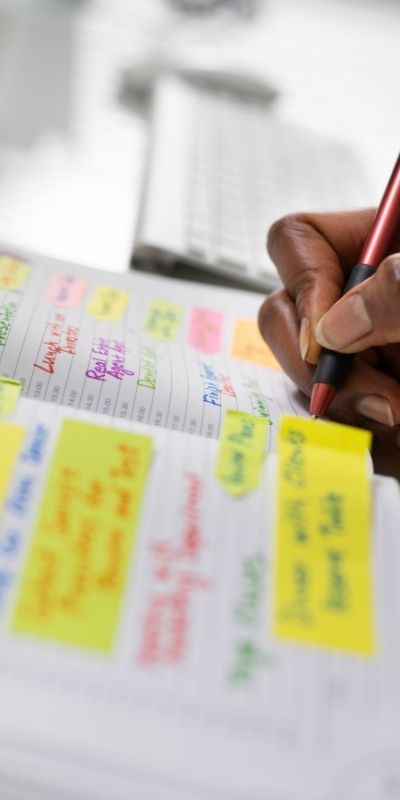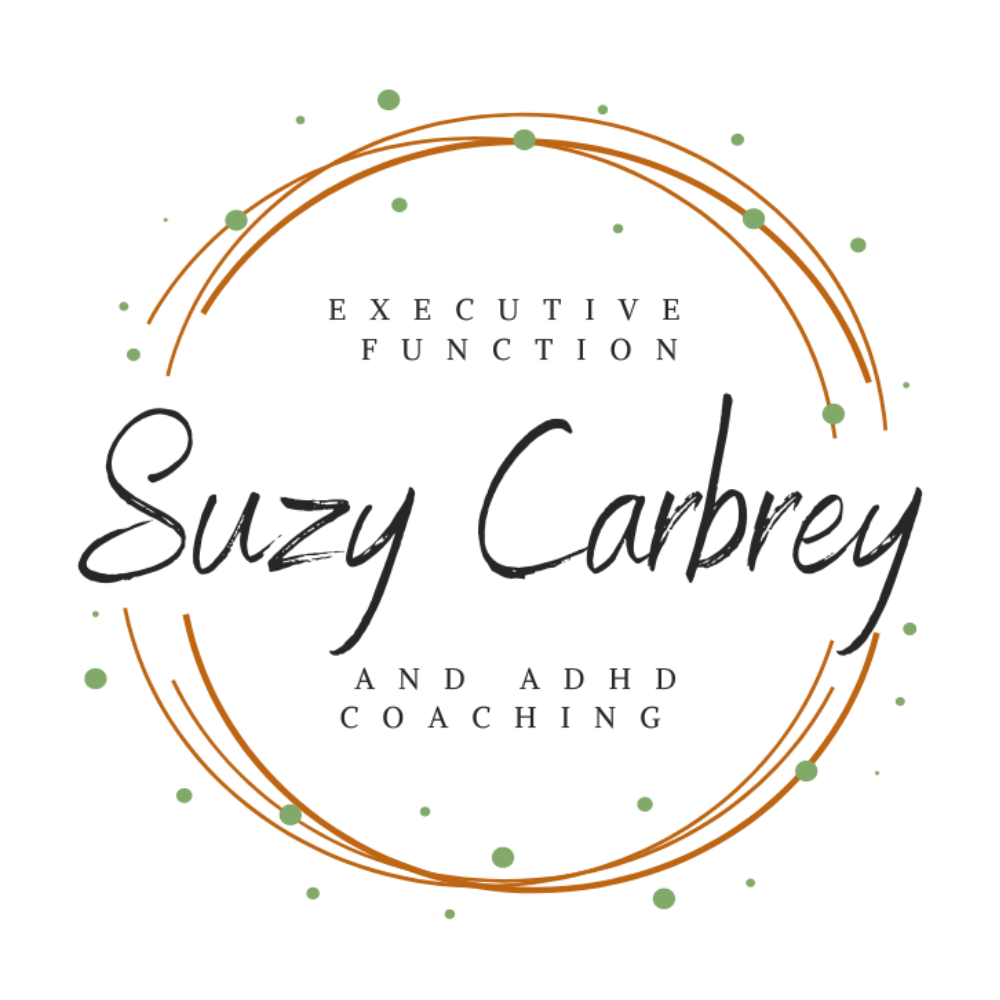Time is a slippery concept, and for adults with executive functioning challenges, including ADHD, the way time is perceived and managed can be significantly different from neurotypical individuals. One crucial aspect of this is the concept of a “time horizon,” the length of time into the future a person can effectively plan and anticipate consequences. Many adults with executive functioning challenges have a shorter time horizon, which can make it difficult to prepare for long-term goals, deadlines, and responsibilities.
Renowned ADHD expert Russell Barkley, Ph.D., has noted that individuals with ADHD often experience time in a way that is essentially split into two categories: “now” (what’s currently on their radar) and “not now” (everything beyond their immediate awareness). This binary perception of time can make it particularly challenging to manage responsibilities that extend beyond the present moment. Without intentional strategies, tasks that seem far off can quickly turn into last-minute emergencies, leading to stress, frustration, and a cycle of procrastination.
Understanding how a shorter time horizon impacts daily life and learning effective strategies for extending it can make an enormous difference in managing tasks, commitments, and overall well-being. In this post, we’ll explore what a time horizon is, why it tends to be shorter for individuals with executive functioning challenges, and strategies to bridge the gap using tools like visual calendars, external reminders, and task management systems.
What is a Time Horizon?
A time horizon refers to the mental window into the future that a person considers when making decisions. For neurotypical individuals, this horizon can stretch weeks, months, or even years into the future, allowing for long-term planning and goal-setting. However, for adults with ADHD or executive functioning difficulties, this window is often much shorter—sometimes extending only hours or days ahead. This can make it difficult to anticipate deadlines, plan for upcoming events, or pace work effectively over time.
When someone has a shorter time horizon, tasks that are due in the distant future feel abstract and less urgent. Without tangible cues, deadlines and commitments can slip through the cracks until they become last-minute emergencies, leading to stress and overwhelm. This “now or not now” perception of time can make it challenging to break tasks into smaller, manageable steps and prioritize responsibilities effectively.
How a Shorter Time Horizon Affects Daily Life
A limited time horizon, where focus is primarily on the present moment or immediate future, can create significant difficulties across various areas of life. This is especially true for individuals managing ADHD or executive functioning challenges, where the ability to extend one’s perspective beyond the immediate can feel overwhelming. The result is often a cycle of urgency, stress, and missed opportunities. Here’s how a shorter time horizon can impact different aspects of daily life:

1. Long-Term Planning:
When the mind is geared toward the here and now, tasks that require extended preparation or effort over weeks or months can feel like insurmountable obstacles. Planning for events, vacations, or projects that are far off may seem irrelevant or unattainable. This often leads to procrastination or rushing to complete tasks at the last minute, as there is no sense of urgency until the deadline looms large. The resulting stress can diminish the quality of the work and potentially lead to missed opportunities, creating a sense of frustration or failure.
Solution:
To counteract this, individuals can benefit from tools that externalize time, like planners or digital reminders, which allow them to visualize long-term tasks broken into smaller, more manageable steps. Using a system like the 12-Week Year, where goals are set for a three-month period, helps bring a sense of urgency while still allowing for thoughtful preparation.
2. Meeting Deadlines:
Without a clear sense of long-term deadlines, tasks can feel abstract or too distant to be taken seriously. Only when they are imminent do they suddenly become urgent. This last-minute rush often results in stress, anxiety, and suboptimal work, leading to feelings of panic as deadlines approach. The constant cycle of “catching up” can create a sense of never being fully in control of time.
Solution:
Implementing regular check-ins, setting intermediate milestones, and creating visual timelines can help break large tasks into more immediate, actionable steps. External reminders, whether through phone apps or sticky notes, can act as prompts, ensuring that deadlines remain in focus well before the due date.
3. Financial Management:
When attention is consumed by immediate needs, long-term financial planning—such as saving for retirement, emergency funds, or future expenses—can be neglected. Without a sense of future consequence, it becomes easy to prioritize short-term purchases over more significant, future-oriented financial goals. This can lead to financial instability and stress as the future approaches faster than anticipated.
Solution:
Externalizing financial planning through automated savings, setting up small weekly or monthly financial goals, and using budgeting tools can help shift the focus from present spending to future stability. A financial advisor or coach can also help individuals establish a clear roadmap for managing long-term finances.
4. Appointments and Commitments:
For individuals who struggle with planning, remembering appointments and commitments can be especially challenging. Without a clear connection to the future, upcoming events can easily slip through the cracks until they become urgent, often leading to missed appointments or poorly prepared commitments. This not only affects productivity but also relationships and professionalism.
Solution:
Using a combination of digital and physical reminders, along with an established routine for reviewing upcoming appointments (such as a weekly planning session), can alleviate this issue. Additionally, scheduling time each day to check calendars and prep for the next day’s events helps build consistency and reliability.

5. Work and Career Goals:
In professional settings, the challenge of managing long-term career growth and large projects can be magnified when the focus remains on the here and now. Breaking down a large project into actionable, smaller tasks over time may feel overwhelming, and long-term goals can seem impossible to achieve. This can lead to stagnation in career development, frustration over unmet aspirations, and missed opportunities for advancement.
Solution:
Using a combination of digital and physical reminders, along with an established routine for reviewing upcoming appointments (such as a weekly planning session), can alleviate this issue. Additionally, scheduling time each day to check calendars and prep for the next day’s events helps build consistency and reliability.
These challenges often lead to frustration, self-doubt, and the belief that no matter how hard one tries, they will always be behind. However, by externalizing time and implementing intentional strategies, individuals can extend their time horizon and improve their ability to manage future-oriented tasks.
More Strategies for Extending the Time Horizon
1. Utilize Visual Calendars for Time Awareness
One of the most effective ways to extend a shorter time horizon is to make time more visible. A digital or physical calendar helps externalize time and allows individuals to see upcoming tasks, deadlines, and commitments.

- Wall Calendars: A large, visually accessible calendar can provide a constant reminder of important dates.
- Digital Calendars: Apps like Google Calendar or Apple Calendar can send reminders and allow for easy access across devices.
- Color-Coding: Assign different colors for various types of tasks—work, personal, social, and deadlines—to enhance organization and quick recognition.
- Weekly and Monthly Views: Seeing both the short-term (week) and longer-term (month) views can help bridge the gap between immediate and future responsibilities.
2. Implement a Visual Task Management System
Breaking down tasks into smaller, visual components helps individuals with executive functioning challenges manage their responsibilities more effectively.
- Kanban Boards: Systems like Trello or physical boards with “To Do,” “In Progress,” and “Completed” sections can make tasks more tangible.
- Post-It Note Systems: Writing tasks on sticky notes and moving them through a workflow can provide a sense of progress.
- Checklist Apps: Tools like Todoist or Microsoft To Do allow users to track tasks, set deadlines, and receive reminders.
- Time Blocking: Assigning specific time slots for tasks in a calendar can help structure the day and prevent last-minute rushes.
3. Use Timers and Reminders for Future-Oriented Thinking
Since time can feel fluid or abstract, external reminders help anchor tasks to reality.
- Phone Alarms and Notifications: Setting multiple reminders before deadlines can provide nudges to start tasks early.
- Pomodoro Technique: Using 25-minute work sprints with scheduled breaks can improve focus and pacing.
- Countdown Apps: Visual countdowns to deadlines or events can provide a sense of urgency and progression.
4. Connect Future Tasks to Immediate Rewards
A shorter time horizon often means future rewards feel distant and less motivating. Creating immediate incentives can help bridge this gap.
- Gamify Tasks: Use apps that provide points or rewards for completing tasks.
- Accountability Partners: Checking in with a friend, coach, or support group can provide external motivation.
- Personal Rewards: Pair a completed task with a small, enjoyable reward to reinforce the habit.
5. Create Rituals and Routines to Automate Planning
Building habits around time management reduces the need for constant decision-making and increases consistency.
- Weekly Planning Sessions: Set aside a time each week to review upcoming tasks and deadlines.
- Evening and Morning Reviews: Spend a few minutes each day reviewing what needs to be done next.
- Pre-commit to Tasks: Scheduling specific times for tasks in advance reduces the likelihood of procrastination.

6. Practice Time Travel: Projecting Into the Future
Helping individuals mentally “visit” their future can make distant tasks feel more real.
- Visualizing Outcomes: Imagining what success looks like for a future task can make it more tangible.
- Writing Letters to Future Self: Jotting down what needs to be done and why it matters can reinforce future accountability.
- Backward Planning: Starting with the end goal and working backward to today can clarify the steps needed.
Final Thoughts
For adults with executive functioning challenges, a shorter time horizon can make long-term planning and task management overwhelming. However, by externalizing time through visual calendars, task management systems, reminders, and structured routines, it is possible to extend this horizon and create greater control over daily life.

Instead of relying solely on internal time awareness, using external supports can bridge the gap between present and future thinking. By experimenting with these strategies, individuals can discover what works best for them and move toward greater confidence in managing their responsibilities.
If you struggle with a short time horizon, remember that the right tools and approaches can make a world of difference. Small adjustments can create powerful shifts, helping you feel more in control of your time, tasks, and future goals.
Learn more with Online Coaching for Executive Functioning / ADHD
Ready to gain control and enhance your executive functioning? As an experienced and compassionate coach, I specialize in providing support for executive functioning and ADHD. To embark on your journey, please reach out to me at 708-264-2899 or email hello@suzycarbrey.com to schedule a FREE 20-minute discovery call consultation.
With a background as a speech-language pathologist, I have a strong foundation in executive functioning coaching. My graduate degree program in SLP placed a significant emphasis on cognition, including executive functions, and I have years of experience in medical rehabilitation, providing cognitive-communication therapy. Additionally, I have completed an ADHD Services Provider certification program, I am Solutions-Focused Brief Therapy Diamond Level 1 certified and I am trained in the Seeing My Time® executive functioning curriculum.
Experience the convenience and effectiveness of online coaching, backed by studies that demonstrate equal results to in-person services. Parents, professionals, and emerging adults love the convenience and privacy of receiving coaching from their own homes.
Whether you reside in Chicago, Milwaukee, Indianapolis, Kansas City, or anywhere else around the globe, I am here to assist you. Schedule your discovery call consultation today, and I eagerly anticipate the opportunity to work with you!
Please note that although I am a certified speech-language pathologist, all services Suzy Carbrey LLC provides are strictly coaching and do not involve clinical evaluation or treatment services. If you require a formal speech therapy evaluation and treatment, please inform me, and I can provide appropriate recommendations.

